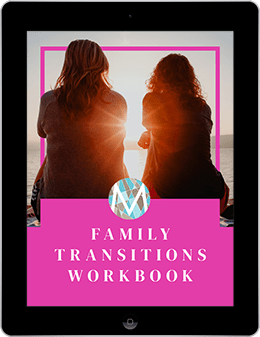Do you have a favorite charity? Maybe your family volunteers at the local food bank every Thanksgiving, or you have fond memories of working with Habitat for Humanity in your 20s and 30s. (Back when your body had no problem working in construction for a full day!) As a retiree, you can donate more than just time to these organizations—you can donate money. Making a qualified charitable distributions (QCD) from your IRA is a great way to make a difference.
What makes a qualified charitable distribution special? With these donations, a charitable donation is made directly from your IRA to the charitable organization. By making this direct gift, you also receive some nice perks.
Who Can Make Qualified Charitable Distributions?
People can make qualified charitable distributions once they hit age 70 ½. Remember, you must actually be 70 ½ when you make the donation, not just turning 70 ½ that calendar year!
Did your mom leave her IRA to you when she passed away? As a beneficiary, you’re eligible to make a qualified charitable distribution from the account—as long as you’re at least 70 ½.
You can only make qualified charitable distributions from a traditional IRA, not from a 401(k), 403(b), SEP IRA, or SIMPLE IRA. Technically, you could make a donation from a Roth IRA, but there wouldn’t be much of a point.
When you withdraw funds from a Roth IRA, you don’t have to pay taxes on the money as you would with a traditional IRA. While you’d still be giving to a good cause, giving directly from a Roth IRA wouldn’t benefit you. (More on the tax benefits that come with donating from a traditional account in a little bit!)
How to Make Qualified Charitable Distributions (QCDs)
First things first: Decide how much you want to give. You can donate up to $100,000 per year total from all your accounts. So if you have two IRAs, you can’t give $100,000 from one, then another $100,000 from the second one. But if you’re married, you and your spouse can each give $100,000, as long as you give from your respective accounts.
To donate, contact your financial advisor or IRA custodian. Be sure to specify that they make the check payable directly to the charity, not to you. You should also tell your custodian that they shouldn’t withhold any money from the charity for taxes.
To receive a tax break when you file taxes for this calendar year, the charity should cash the check by December 31st. You’ll probably want to start the process early in the new year, just to be on the safe side.
How to Save Tax Dollars
This is where the exciting part comes in! How can qualified charitable distributions save you tax dollars?
When you make a qualified charitable distribution, your annual adjusted gross income decreases by the amount of the distribution. This will save tax dollars. For example, if you donate $10,000 and you are in the 25% tax bracket, you will save $2500 in taxes. This strategy is really helpful for those retirees who no longer can itemize their charitable contributions.
Have you heard of a required minimum distribution (RMD)? Once retirees hit age 72, by law, they must withdraw at least a minimum amount from their IRAs. If you make a qualified charitable distribution at age 72 or older, that gift counts toward your RMD for the year.
Let’s say Dana’s required minimum distribution for the year is $20,000. She makes a qualified charitable distribution to her local homeless shelter for $15,000. The $15,000 dollar distribution satisfies $15,000 of her RMD, leaving her to receive the remaining $5,000 RMD directly.
Dana doesn’t pay income taxes on the $15,000 gift to the shelter as she never received the income. Thus, her income drops by $15,000, which decreases the amount of taxes she owes. Talk about a major win!
How to Decrease Medicare Premium Surcharges
The higher your income, the higher your Medicare premium surcharge. Required minimum distributions count toward your taxable income, which can drive up your premiums.
But if you use a qualified charitable distribution to fill your RMD requirement, it doesn’t count toward your taxable income! If used strategically, this may help you avoid the surcharge, thus keeping your Medicare premium lower.
Remember Dana? Dana’s adjusted gross income was $120,000 for 2018 which would make her premium $289.20 (Medicare Part B) and $31.50 (Medicare Part D), resulting in a monthly premium of $320.70. When she made the QCD of $15,000 to her charity, she decreased her adjusted gross income to $105,000. Now she will only be paying $214.60/month for Part B and Part D, for an annual savings of $1273.20.
Qualified charitable distributions, required minimum distributions, taxable income… These are all tricky subjects! Too often, women pay more in income tax and Medicare premiums than they need to, simply because they don’t know what questions to ask their financial advisors.
If you’re looking for an honest, thorough explanation of qualified charitable distributions, please reach out. We’d love to talk about your financial plans — and your plans for giving back to the community.








